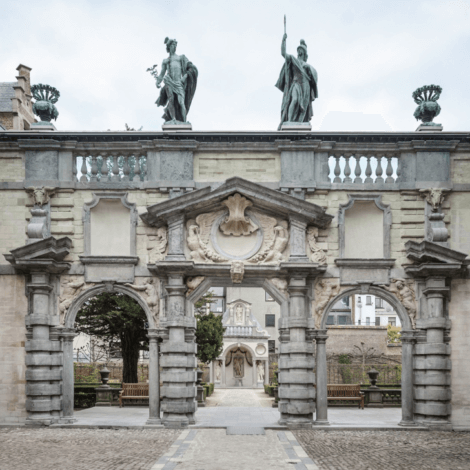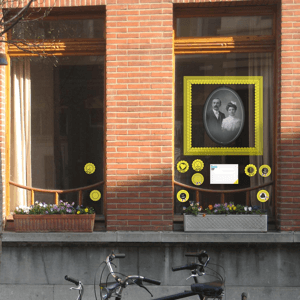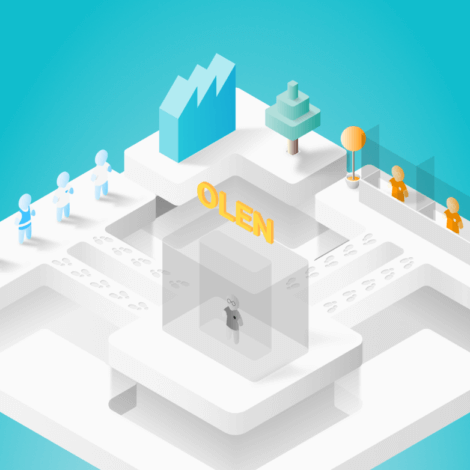C³PO
Studio Dott worked on the ITEA research project C3PO, alongside a consortium of companies from various European countries (Finland, Turkey and Belgium).
The aim of this research project was to find out how a common, digital platform could be set up, bringing together all available tools for collaborative urban development. This includes, for example, the available (open) data sources, 3D models, visualizations but also opinions and insights from citizens and interest groups.
Looking for ...
During this process, Studio Dott focused on experimenting with new forms of interaction in large-scale participation projects. We developed and tested various forms of interaction to explore how we can involve and engage large groups of stakeholders. After all, we wanted to create alternatives for the typical online surveys and platforms, in order to arrive at tools that provide more insights, and more enriching insights based on qualitative data.
Designing the Participation Process
The first step in the C³PO project was to draw up a joint framework for the ideal urban development process. Together with the project partners, we distilled 8 steps:
- framing and context definition
- collecting data
- analysis
- ideas and alternative solutions
- communication and evaluation
- finalizing and agreements
- implementation and construction
- management.
These steps became the basis for the work of all C³PO partners.

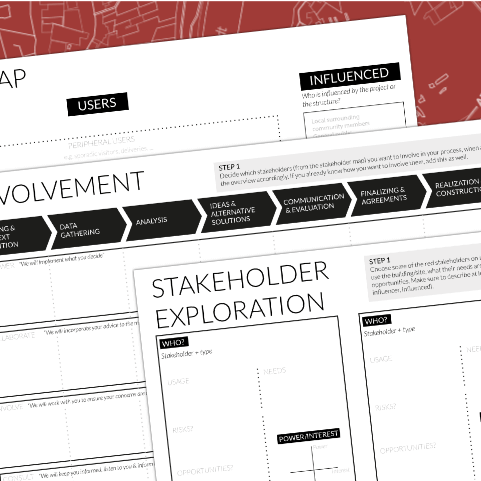
Mapping of Stakeholders
Participation must be organized consciously. That is why it is crucial to determine which stakeholders should be involved and what their relationship is to the urban development project. Based on our service design expertise, we developed 2 instruments for this, which make it possible to get a good overview of all the parties involved, together with a municipality or city, before the project starts.
Online and Offline Tools
At the start of C³PO, we noticed that many organizations focus on digital citizen participation. This usually boils down to an online platform where questions and/or ideas can be posted. Although this is a fascinating evolution, it also became immediately clear that these new forms of participation only reach a fraction of the target audience. As a facilitator in participation processes for companies, governments and organizations, Studio Dott wants to offer new forms of participation that appeal to and reach the various target groups as widely as possible.
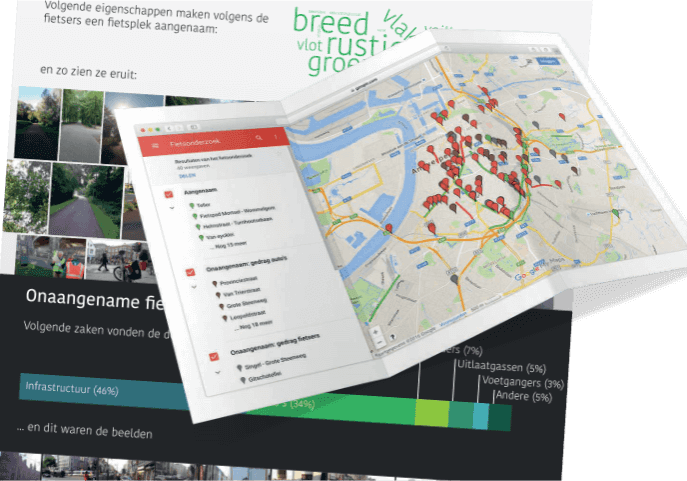
Experiment 1 : integrating existing online tools (Google maps, DScout) for data collection and reporting
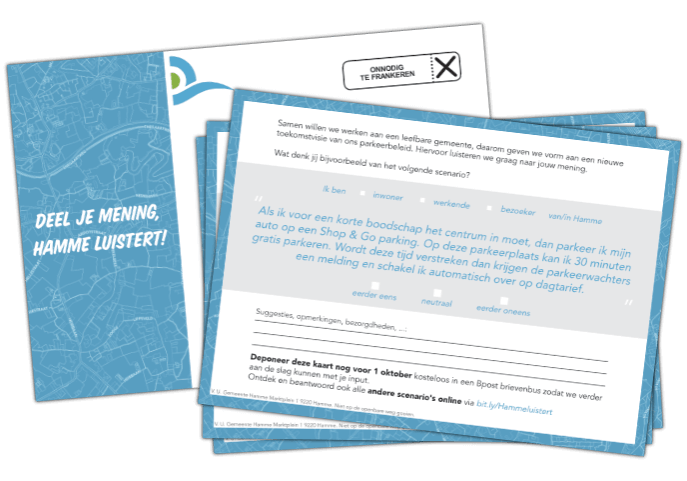
Experiment 2 : reaching hard-to-reach target groups with printed cards that can be returned free of charge
Participation pavilion
We designed a participation pavilon that bridges the gap between digital and physical participation. The carefully designed stickers with visualizations and information immerse the participants into the subject matter for which their ideas, feedback and suggestions are needed. Furthermore, the pavilion has a telephone receiver with one large button below it. When a participant picks up the phone, he or she is asked a number of questions. After each question, the participant can record his answer and go to the next question by pressing the button. The answers are automatically captured in audio files.
During the development of this pavilion, we were able to experiment with digital, automated analysis forms of the collected 'rich' data, in collaboration with several partners (christophe.vg & Cropland). We looked into 'speech to text' and linguistic algorithms, among other things. Read more about it in this blog post.
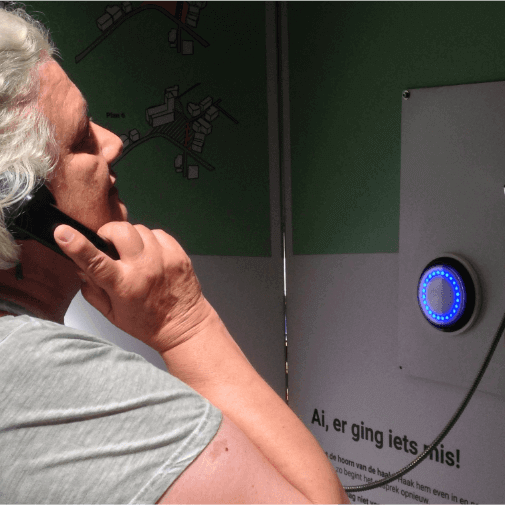
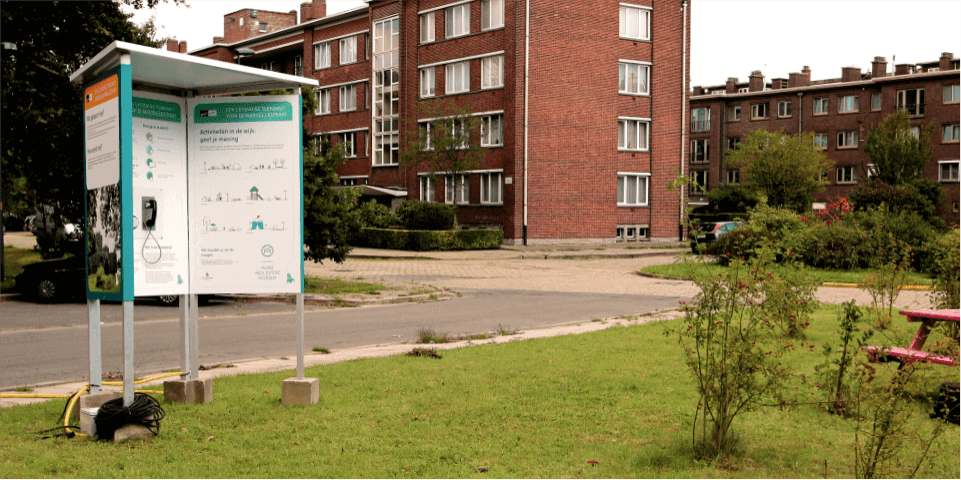
Gent MMM

Schilde luistert
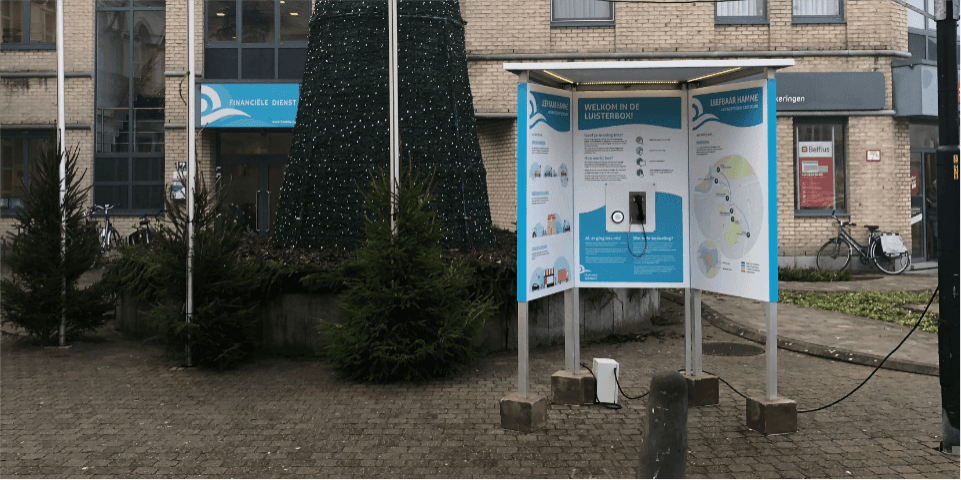
Babbelbox Hamme
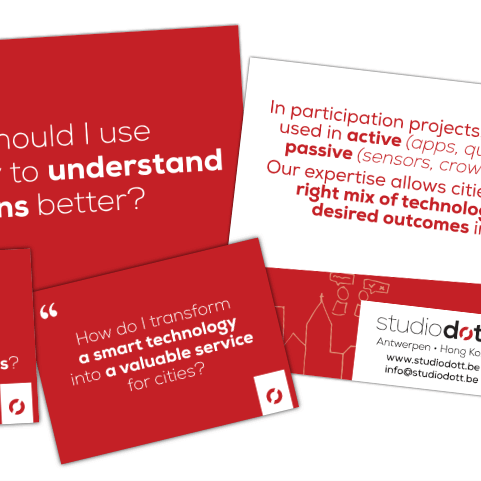
Participation paths
During the C³PO project, we conducted in-depth research thanks to various cases involving participation. We summarized our experiences and insights in a series of blog posts that will be published in early 2019. Afterwards these posts will be bundled in a publication that will be available online.
Media attention
- Four awarded ITEA projects create big impact and a better society in different ways
- Babbelbox puts forward propositions on parking policy (in Dutch)
- Muide Meulestede can give opinion via telephone (in Dutch)
- Share ideas on the Church square, day and night, thanks to a travelling Listening box (in Dutch)
- Brainstorming about the future of the Church square (in Dutch)
C³PO
Samen met een consortium bedrijven uit verschillende Europese landen (Finland, Turkije en België) werkte Studio Dott aan het ITEA onderzoeksproject C3PO.
Het doel van dit onderzoeksproject was te achterhalen hoe een gemeenschappelijk, digitaal platform kon worden opgezet, dat alle tools voor collaboratieve stadsontwikkeling samenbrengt. Denk hierbij aan beschikbare (open) databronnen, 3D-modellen, visualisaties maar ook meningen en inzichten van burgers en belangengroepen.
Op zoek naar ...
Tijdens dit traject focuste Studio Dott op het experimenteren met nieuwe interactievormen binnen grootschalige participatietrajecten. We hebben verschillende vormen van interacties ontwikkeld en getest om na te gaan hoe we grote groepen stakeholders kunnen betrekken en laten participeren. We willen immers alternatieven creëren voor de typische online enquêtes en platformen, om zo te komen tot tools die meer en rijkere inzichten geven op basis van kwalitatieve data.
Vormgeven van het participatieproces
De eerste stap in het C³PO-project was het opstellen van een gezamenlijk kader in de vorm van 8 stappen:
- framing en contextdefinitie
- data verzamelen
- analyse
- ideeën en alternatieve oplossingen
- communicatie en evaluatie
- finaliseren en overeenkomsten
- realisatie en constructie,
- management.
Deze stappen werden de basis voor het werk van alle C³PO-partners.
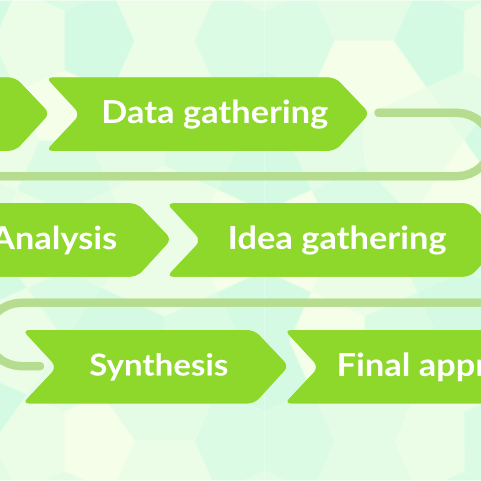
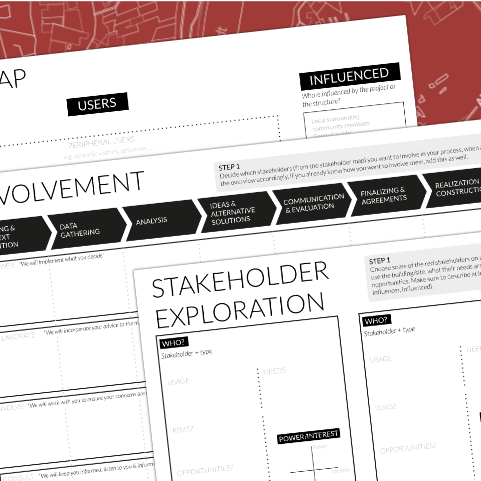
Stakeholders in kaart brengen
Participatie moet je bewust organiseren. Daarom is het cruciaal om te bepalen welke stakeholders betrokken moeten worden en wat hun relatie is tot het stadsontwikkelingsproject. Vanuit onze service design expertise ontwikkelden we hiervoor 2 instrumenten, die het mogelijk maken om samen met een gemeente of stad een goed overzicht van alle te betrekken partijen te krijgen voordat het project van start gaat.
On- en offline tools
Bij de start van C³PO viel het ons op dat veel organisaties inzetten op digitale burgerparticipatie. Dit komt meestal neer op een online platform waarop vragen gesteld en/of ideeën gepost kunnen worden. Hoewel dit een boeiende evolutie is, werd het ook meteen duidelijk dat deze nieuwe vormen van participatie slechts een beperkt deel van het beoogde publiek bereiken. Als facilitator van participatietrajecten voor bedrijven, overheden en organisaties, wil Studio Dott nieuwe vormen van participatie aanreiken die de verschillende doelgroepen zo breed mogelijk aanspreken én bereiken.

Experiment 1 : bestaande online tools (Google maps, DScout) integreren voor dataverzameling en rapportering

Experiment 2 : moeilijk bereikbare doelgroepen bereiken met geprinte kaarten die gratis teruggestuurd konden worden
Participatiepaviljoen
We ontwierpen een participatiepaviljoen dat de brug slaat tussen digitale en fysieke participatie. De zorgvuldig ontworpen bestickering met visualisaties en informatie dompelt de deelnemers onder in de materie waarvoor hun ideeën, feedback en suggesties nodig zijn. Verder bestaat het paviljoen uit een telefoonhoorn met één grote knop eronder. Wanneer de hoorn afgenomen wordt, krijgt de deelnemer een aantal vragen voorgeschoteld. Na elke vraag kan de deelnemer zijn antwoord inspreken en een volgende vraag krijgen door op de knop te drukken. De antwoorden worden automatisch gecapteerd in audiobestanden.
Tijdens de ontwikkeling van dit paviljoen hebben we in samenwerking met enkele partners (christophe.vg & Cropland) kunnen experimenteren met digitale, geautomatiseerde analysevormen van de verzamelde ‘rijke’ data. We verdiepten ons onder andere in 'speech to text' en linguïstische algoritmes. Je kan hier meer over lezen in deze blogpost.




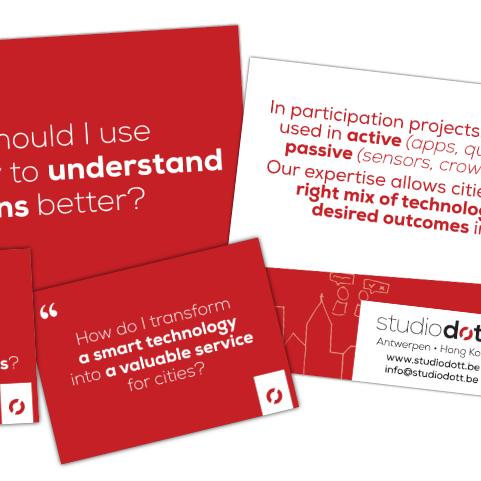
Participatiepaden
Gedurende het C³PO-project hebben we diepgaand onderzoek verricht dankzij verschillende cases rond participatie. Onze ervaringen en inzichten hebben we samengevat in een reeks blogposts, welke in 2020 online verschijnen. Nadien worden deze posts gebundeld in een publicatie die online beschikbaar zal zijn.
In de pers
More projects
You might also like these projects...
Next project
You might also like this project...


